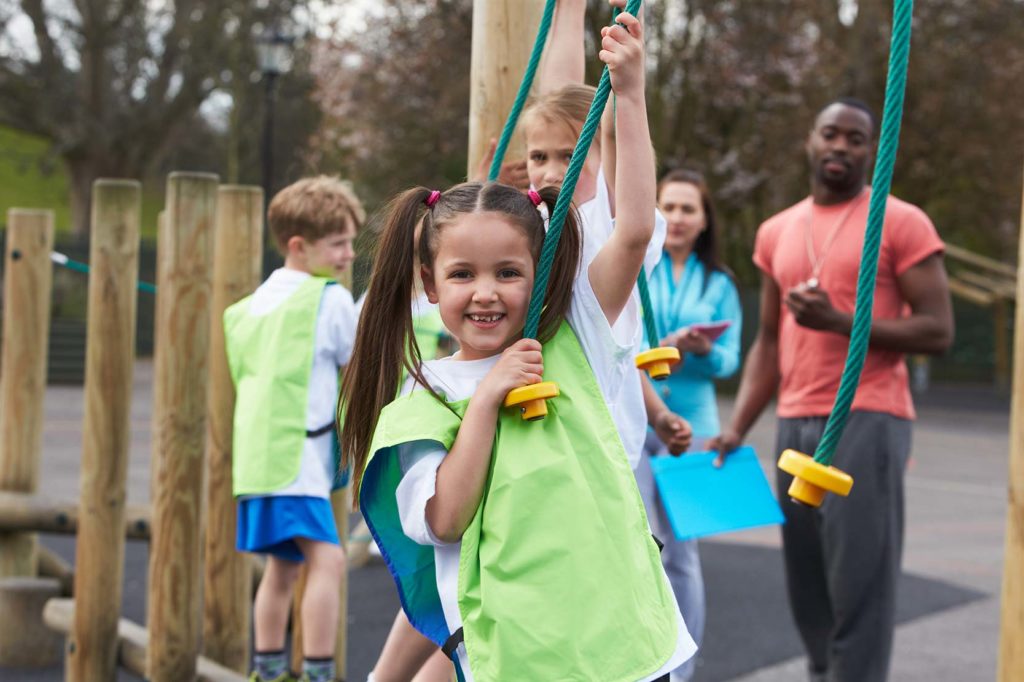Letting your child run around outside in the fresh air is great for their growth and development. Playgrounds are great fun, but it is very important to check that the area and equipment are safe for your child.
Every year, more than 220,000 kids under age 14 are treated in the hospital for playground injuries. Although minor bumps, bruises or cuts occur on playgrounds often, some other more severe injuries – broken bones, concussions, dislocations and internal organ injuries – are the most common playground injuries that require a doctor’s immediate care.
Parents and educators can make the playground safer for kids, including adult supervision, ensuring that equipment is free of potential hazards and steering children to age-appropriate play areas.
Here are a few other tips on how to prevent playground injuries.
Supervise children while playing
Kids can be fearless and often don’t know yet what their limits are. Supervise them at all times. Supervision won’t prevent all injuries, so if first aid is needed, administered it right away.
Safety of the children’s playground
Always check that playground surfaces are clean and clear of any obstructions before letting a child play.
Regarding surfaces, some things need to be considered: safer surfaces include wood chips, mulch, sand, pea gravel. Rubber mats made of compliant materials can also provide a safe surface to play. Rubber mats can provide the best access for people in wheelchairs.
Design and spacing of children’s playgrounds
Children’s playground equipment should be appropriate for the age of the user.
Play areas for younger children should be separated from those meant for older kids with signs to locate each area clearly. Children shouldn’t play in an area not designed for them.
Here are some things to look for when assessing children’s playground equipment:
- swings, seesaws, and other equipment with moving parts should be located in an area separate from the rest of the playground and swings should be limited to 2 per bay;
- baby swings with full bucket seats should have their own bay;
- swings should be spaced at least 24 inches apart and 30 inches between a swing and the support frame;
- guardrails and protective barriers should be in place for elevated surfaces, including platforms and ramps;
- climbing nets should have openings that are either too small to allow a child’s body through or large enough to prevent entrapment of the head;
- look out for ‘pinch points’ on playground equipment with moving parts, anything that a child could get their limbs caught in.
Maintenance and inspection tips for a playground
- There should be no broken equipment, wooden equipment should not be cracking or splintering, and metal equipment should not be rusted
- The fence surrounding a public playground should be in good condition to prevent kids from running into surrounding traffic or busy areas
- Surface materials on the playground should be maintained to minimize tripping hazards
- Children’s playground equipment should be made of durable materials that won’t fall apart or be damaged by the weather
- Check for objects like loose screws/bolts that stick out on equipment and could cut a child or cause clothing to become entangled
- Check for debris in sandboxes and be sure that the sand is free of bugs. Sandboxes should be covered overnight to prevent contamination from animals
- Keep the area the way you would like to find it. Pick up trash, use the equipment properly, and report any problems to the organization that is responsible for maintenance of the playground.
Teaching kids about playground safety to prevent injuries
Children’s playgrounds can be a great place for kids to socialize with their friends when supervised correctly. Follow these safety tips to ensure children you are supervising play safely and avoid injuries.
Teach children to:
- never push or play too rough when using playground equipment;
- use the equipment correctly – slide feet first, don’t climb outside guardrails, no standing on swings;
- land on both feet if they are going to jump off equipment or slide;
- playground surfaces may be slippery when wet;
- during summer, check all playground surfaces (especially metal) as they can get very hot from the sun;
- wear sunscreen, even on cloudy days, to avoid sunburn;
- avoid clothes with drawstrings or long ties as these can become trapped and can cause injuries.
 Share on facebook
Share on facebook
 Share on twitter
Share on twitter
 Share on linkedin
Share on linkedin
 Share on email
Share on email

